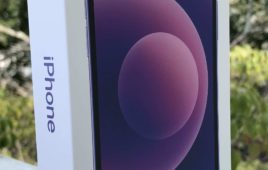The end of the year is nearly upon us, which makes it a good time to check in on the status of the country’s LTE networks. Verizon’s LTE network just turned four and started to feel growing pains in the form of capacity issues. AT&T is heading in the same direction, while T-Mobile is just starting to get its low-band LTE network off the ground. And Sprint is finally nearing the finish line for its Network Vision initiative and its WiMax past is but a dream.
Let’s break down the POPs, VoLTE coverage and other major network progressions for the Tier 1 carriers.
Verizon Wireless
Verizon’s original 700 MHz LTE deployment is substantially complete, covering almost 308 million people in more than 500 markets. The capacity issues that came about after completion are currently being addressed with Verizon’s LTE deployment on 1700/2100 AWS spectrum, dubbed XLTE. The new LTE overlay is increasing capacity by up to 30 MHz in some markets. Verizon says XLTE is now in more than 400 markets.
But the bandwidth demand is escalating and the spectrum crunch looks real, so Verizon has already begun tentative steps to refarm PCS spectrum previously used for 3G services and switch it over to LTE. The carrier is initially trialing LTE on PCS in 10 markets.
Read more: Verizon Refarming 3G Spectrum for LTE in 10 Markets
VoLTE: In mid-September, Verizon began rolling out nationwide HD Voice and simplified video calling featuring HD audio. It’s all powered by VoLTE but Verizon picked a better name, Enhanced Calling 1.0.
Verizon already announced it is working with AT&T to enable VoLTE interoperability between the two carriers’ subscribers by 2015.
Read more: AT&T, Verizon Working on VoLTE Interoperability
2014 Recap: The results are still out for the FCC’s AWS-3 auction but Verizon could end up taking away a decent size chunk of the 65 MHz of spectrum on the block. But with the total revenue soaring past $43 billion and some individual license blocks nearing $3 billion, Verizon could be on the hook for some serious CapEx.
Besides having a shot at some high value LTE spectrum at auction, Verizon stayed busy with secondary market transactions in 2014. Most notably, Verizon offloaded to T-Mobile some 700 MHz A-Block spectrum covering about 158 million POPs. In return, Verizon got $2.4 billion and some AWS and PCS licenses.
Plans for 2015: As it bulks up its AWS portfolio, Verizon has announced its plans for LTE-Advanced in 2015 that could put those airwaves to work on boosting peak speeds on its network. The carrier will begin combining its 700 MHz and AWS LTE with Carrier Aggregation (CA) which should increase peak download speeds but still keep average speeds fairly consistent with the existing Verizon network.
Verizon also plans to use enhanced Inter-Cell Interference Coordination (eICIC) to help its macrocells and small cells play nice together. The carrier has also talked about potentially putting 4×4 (Multiple Input Multiple Output) MIMO antenna technology into its towers, an improvement not technically defined as LTE-Advanced.
AT&T
During its second quarter earnings call, AT&T said it expected to substantially complete its LTE network over the summer. Deployed on 700 MHz spectrum, that network now covers more than 300 million people.
AT&T is now deploying LTE on its AWS spectrum but its holdings are sporadic nationwide and non-existent in some markets. The carrier has no AWS spectrum covering New York City and only 10 MHz covering Los Angeles. With big AWS holes to fill, AT&T is likely a strong competitor in the AWS-3 auction though it could still be weeks before we know which bidders won which licenses.
VoLTE: In December, AT&T announced the expansion of its VoLTE and HD Voice coverage across 17 states and the District of Columbia. With the expansion of the service AT&T is also expecting more VoLTE-capable handsets to hit the market by the end of 2014 and into 2015.
As previously mentioned, AT&T is working on VoLTE interoperability with Verizon subscribers for 2015 but AT&T Senior Vice President of Technology and Operations John Donovan said the carrier is working on similar compatibility agreements with other carriers, too. During a call with investors and analysts, Donovan said he believed AT&T would have a reliability advantage with the emerging voice technology.
Read more: AT&T Exec: “We’re Going to Have a Reliability Advantage in VoLTE”
2014 recap: In March, AT&T went live with its CA LTE network in Chicago. The carrier is still using the technology sparingly but potentially have more LTE deployed on AWS, refarmed PCS or WCS spectrum next year for coupling with its 700 MHz network.
In May, AT&T was confident its pending DirecTV acquisition wouldn’t get in the way of its network plans and said its Project VIP network enhancement initiative was on track. In 2014, as part of VIP, the carrier ramped up its deployment of small cells and Distributed Antenna Systems (DAS) in efforts to boost the capacity and reach of its LTE network.
Read more: AT&T: DirecTV Deal Won’t Affect Network Plans
Throughout the year, AT&T continued adding vendors to its Domain 2.0 program, the carrier’s effort to move its network toward a cloud-based infrastructure.
Like Verizon, AT&T could be in the running for an expensive spectrum windfall in the AWS-3 auction but the carrier did manage to piece together plenty of secondary market spectrum deals in 2014.
Expected in 2015: Way back in 2012 AT&T expected to begin deploying LTE on its WCS spectrum in 2015. AT&T abandoned its plans to prop up an LTE network for in-flight service on its WCS spectrum.
AT&T will also keep refarming PCS for LTE and setting up CA where it sees fit through the year. Looking way ahead of 2015, Donovan said in a recent blog that AT&T intends to have virtualized 75 percent of its network by 2020.
Read more: AT&T’s Donovan Vows 75% of Network Virtualized by 2020
T-Mobile
T-Mobile currently boasts coverage of 260 million people, with a promise of 280 million by the middle of next year and 300 million by the end 2015. While primarily deployed in dense urban markets, the Uncarrier’s Wideband LTE, which is deployed in swaths of AWS spectrum starting at 15×15, is T-Mobile’s crowning achievement. During a talk at the UBS investor conference, T-Mobile CFO Braxton Carter said that T-Mobile hopes to have 90 percent of its customers covered with a 20×20 configuration within the “next couple years.” The Uncarrier has converted to LTE 63 percent of the spectrum it acquired from MetroPCS and expects remaining the balance will be refarmed some time in 2015.
Read More: T-Mobile Building Value for a Potential Suitor
VoLTE: MetroPCS was the first to deploy VoLTE, which gave T-Mobile a leg up on the technology when it acquired the smaller prepaid carrier. T-Mobile was the first carrier to declare “nationwide” VoLTE coverage. CTO Neville Ray claims that T-Mobile services over 3.6 million VoLTE-capable devices, and as of September of this year customers had made over 52 million VoLTE calls over the network.
Read More: T-Mobile Goes Nationwide with VoLTE
2014 Recap: The company’s nationwide rollout of VoLTE was big, as was its foray into Wi-Fi calling. T-Mobile also got a boost from deploying 4×2 MIMO cell site configurations. The industry will probably look back 2014 as the year T-Mobile managed to leap frog Sprint, which was busy with its especially ambitious rip-and-replace Network Vision initiative.
Read More: T-Mobile Grabs 700 MHz Spectrum from Verizon
Expected in 2015: Improving coverage anywhere beyond the larger metropolitan areas will be a big win for T-Mobile and its customers. The company will continue its pursuit for more 700 MHz airwaves and promises aggressive deployments on those airwaves in 2015. Barring an acquisition with financial backing and more spectrum, the biggest move T-Mobile can make in the coming year will be improving coverage.
Sprint
It’s been a long haul for Sprint the last couple years, as what is now the nation’s fourth largest carrier bled subscribers due to its network makeover. Thank God for Sprint, the company’s “Network Vision” has largely been realized. Sprint currently covers 260 million people with its 1900 MHz LTE, and 92 million on the company’s swath of 2.5 GHz spectrum. By year end, the carrier hopes to have fully 100 million people covered with its 800 MHz LTE deployment.
Read More: Network Vision Has Been Realized
VoLTE: Sprint hasn’t deployed VoLTE, but the carrier did launch its HD Voice product this year. The service is supposed to provide “a fuller, more natural-sounding voice, plus noise cancelling technology that helps reduce background noise from places like a busy road, a crowded restaurant or a construction site.”
Read More: Sprint Announces Nationwide HD Voice
2014 Recap: The completion of Network Vision is huge for Sprint. The heavy lifting is done, iDEN has been retired and migration rates of customers coming off the old push-to-talk network were better than expected. Sprint managed to convert 60 percent of iDEN subscribers, much better than the 30 percent the company had expected. Meanwhile, all the handsets Sprint sells are tri-band, meaning that most of the carrier’s customers can now take full advantage of deployments on 800 MHz, 1900 MHz, and 2.5 GHz deployments.
Read More: Sprint Losses Narrow Under Claure
Expected in 2015: Sprint is hopeful that it will begin to see the fruits of its labors. Sprint’s main objective will be improving coverage and capacity where needed, while simultaneously improving consumer perception of its network. Sprint has already boarded the promotion bandwagon and will likely continue will special deals and offers throughout the coming year. The company has already seen subscriber losses narrow over the last two quarters, the hope now is that when posting time comes for 4Q, Marcelo and company will have good news for investors.




